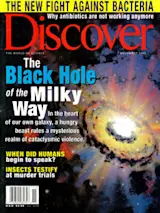Sometimes astronomy is a bit like fishing: patience is the cardinal virtue. A couple of years ago astronomers trained the Hubble Space Telescope on a fairly empty patch of sky and left it there for ten days, trying to catch whatever photons straggled in. The result was the Hubble Deep Field, a series of images that doubled astronomers' estimates of the number of galaxies in the universe to at least 50 billion.
Now researchers in Hawaii have done something similar. Using a new instrument that can peer through the dust that obscures many galaxies, Amy Barger and her colleagues at the University of Hawaii built up images of small parts of the sky over the course of two weeks. They've uncovered evidence of a population of never-before-seen galaxies--so many, in fact, that taken together they shine as brightly as all the rest of the known galaxies in the universe.
The ...














